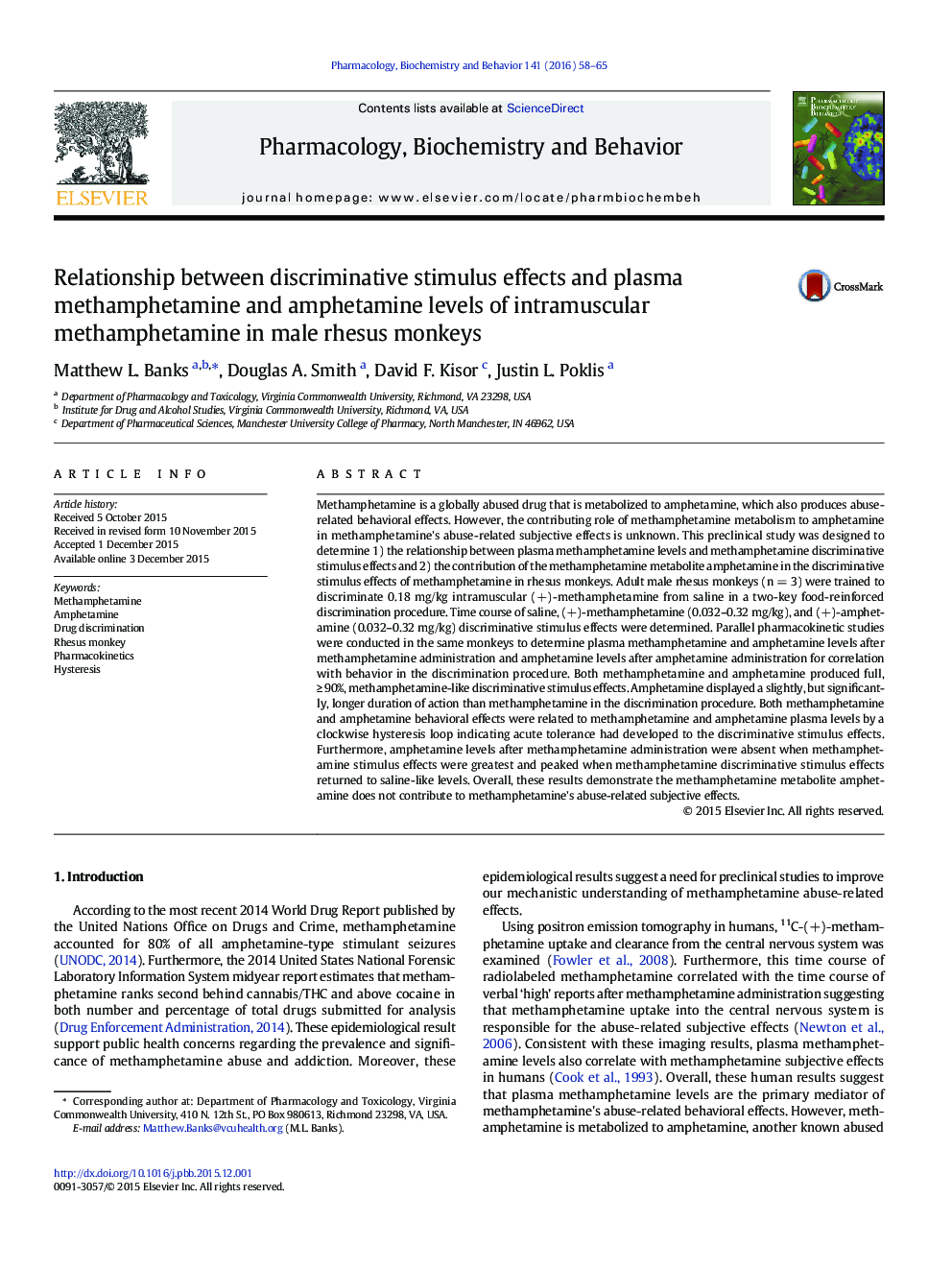| کد مقاله | کد نشریه | سال انتشار | مقاله انگلیسی | نسخه تمام متن |
|---|---|---|---|---|
| 2012668 | 1541844 | 2016 | 8 صفحه PDF | دانلود رایگان |
• METH and AMPH produced dose- and time-dependent discriminative stimulus effects.
• A clockwise hysteresis loop related METH levels and METH stimulus effects
• METH metabolism to AMPH does not contribute to METH stimulus effects.
Methamphetamine is a globally abused drug that is metabolized to amphetamine, which also produces abuse-related behavioral effects. However, the contributing role of methamphetamine metabolism to amphetamine in methamphetamine's abuse-related subjective effects is unknown. This preclinical study was designed to determine 1) the relationship between plasma methamphetamine levels and methamphetamine discriminative stimulus effects and 2) the contribution of the methamphetamine metabolite amphetamine in the discriminative stimulus effects of methamphetamine in rhesus monkeys. Adult male rhesus monkeys (n = 3) were trained to discriminate 0.18 mg/kg intramuscular (+)-methamphetamine from saline in a two-key food-reinforced discrimination procedure. Time course of saline, (+)-methamphetamine (0.032–0.32 mg/kg), and (+)-amphetamine (0.032–0.32 mg/kg) discriminative stimulus effects were determined. Parallel pharmacokinetic studies were conducted in the same monkeys to determine plasma methamphetamine and amphetamine levels after methamphetamine administration and amphetamine levels after amphetamine administration for correlation with behavior in the discrimination procedure. Both methamphetamine and amphetamine produced full, ≥ 90%, methamphetamine-like discriminative stimulus effects. Amphetamine displayed a slightly, but significantly, longer duration of action than methamphetamine in the discrimination procedure. Both methamphetamine and amphetamine behavioral effects were related to methamphetamine and amphetamine plasma levels by a clockwise hysteresis loop indicating acute tolerance had developed to the discriminative stimulus effects. Furthermore, amphetamine levels after methamphetamine administration were absent when methamphetamine stimulus effects were greatest and peaked when methamphetamine discriminative stimulus effects returned to saline-like levels. Overall, these results demonstrate the methamphetamine metabolite amphetamine does not contribute to methamphetamine's abuse-related subjective effects.
Figure optionsDownload as PowerPoint slide
Journal: Pharmacology Biochemistry and Behavior - Volume 141, February 2016, Pages 58–65
